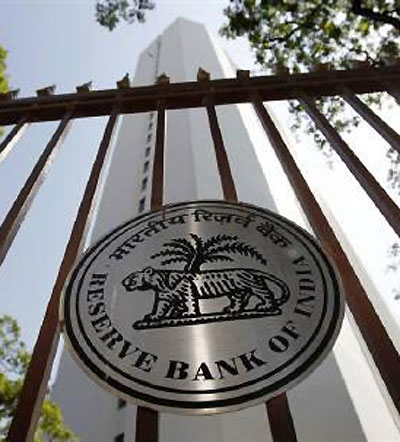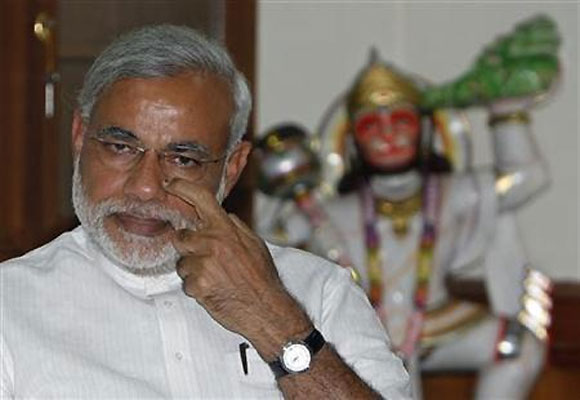Photographs: Danish Siddiqui/Reuters
In a move to stem the continuing fall of rupee, the Reserve Bank of India on Monday came out with a slew of measures including hiking the lending rates for banks and sucking up of Rs 12,000 crore (Rs 120 billion), to make the currency dearer.
The measures came after high level meetings between the prime minister and the finance minister followed by discussions with RBI Governor D Subbarao who was called to New Delhi as the rupee lost 33 paise to reach 59.89 after touching over 61-levels last week.
Under the measures announced, RBI raised lending rates to commercial banks 2 per cent to 10.25 per cent making loans costlier.
The RBI will conduct sale of Government of India Securities to suck up Rs 12,000 crore on July 18 from the market, in a move to make rupee dearer.
Government has been under attack over the continuous decline of rupee from 53.8 levels against dollar in April.
Click on NEXT for more...
RBI announces fresh steps to tackle rupee volatility
Photographs: Adnan Abidi/Reuters
On Sunday, Gujarat Chief Minsiter Narendra Modi had made a blistering attack on government's financial management, including rupee, and targeted Prime Minister Manmohan Singh calling him a "failed economist".
The Marginal Standing Facility (MSF) rate has also been increased to 10.25 per cent from current 8.25 per cent. Repo rate has been left unchanged.
"The Marginal Standing Facility (MSF) rate is calibrated with immediate effect to be 300 basis points above the policy repo rate under the Liquidity Adjustment Facility (LAF)...
Accordingly, the bank rate also stands adjusted to 10.25 per cent with immediate effect.," the release said.
Introduced during the 2011-12 period, MSF allows banks to borrow money from the central bank at a higher rate when there is significant liquidity crunch.
The central bank said it could take more measures depending on market conditions, liquidity situation and the macroeconomic developments.
Click on NEXT for more...
RBI announces fresh steps to tackle rupee volatility
Photographs: Reuters
These steps would be "consistent with growth-inflation dynamics and macroeconomic stability," RBI said.
"The overall allocation of funds under the LAF will be limited to 1.0 per cent of the Net Demand and Time Liabilities (NDTL) of the banking system, reckoned as Rs 75,000 crore (Rs 750 billion) for this purpose," according to the release.
According to RBI, the market perception of likely tapering of US Quantitative Easing has triggered outflows of portfolio investment, particularly from the debt segment.
"The exchange rate pressure also evidences that the demand for foreign currency has increased vis-a-vis that of the rupee in part because of the improving domestic liquidity situation."
RBI said the rupee has depreciated markedly in the last six weeks. Countries, it said, with large current account deficits, such as India, have been particularly affected despite their relatively promising economic fundamentals.
Last week, RBI had asked oil firm to source all of their 8-8.5 billion of dollar needs every month for import of oil, from a single public sector bank. It also barred banks from trading in currency futures and exchange-traded currency options market on their own.




article